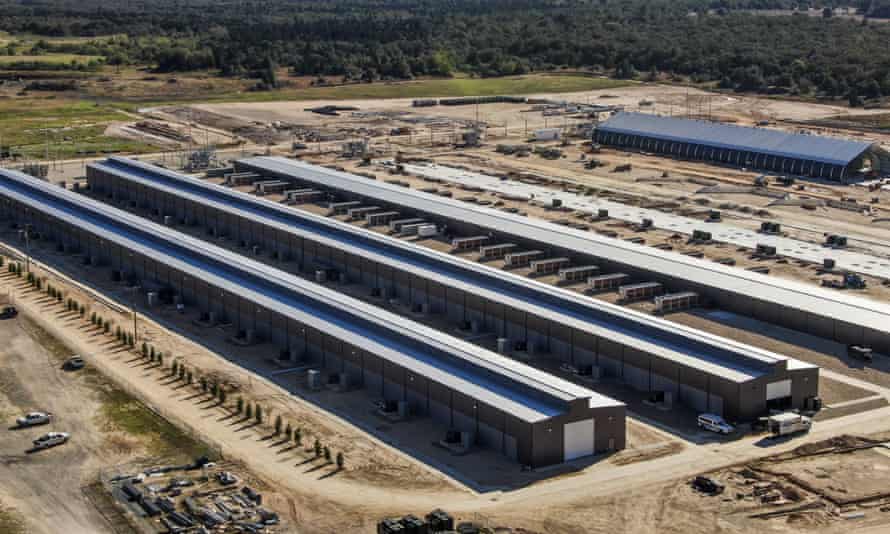When bitcoin mining company Bit Digital started shipping its energy-intensive computers out of China in early 2021, eyebrows were raised. “A lot of people thought we were being overly paranoid,” says chief strategy officer Sam Tabar, who helped relocate all of the company’s machines to the US and Canada.
But the company’s paranoia paid off. China’s bitcoin mining ban last summer, driven partly by environmental concerns, sent the industry spinning into chaos. The announcement sparked a fire sale of the computers used to power bitcoin, with mining companies scrambling to ship more than 2m of the machines out of China. They arrived by the crateload in countries like the US, Russia and Kazakhstan.
China was home to about 65% of global bitcoin production in 2020, according to an estimate by the University of Cambridge. Although the country banned bitcoin mining for a number of reasons, one was the massive energy consumption bitcoin required and the impediment that posed to China’s goal of carbon neutrality by 2060.
Chinese regulators aren’t the only ones concerned by bitcoin mining’s environmental impact. The latest calculation from Cambridge University’s bitcoin electricity consumption index estimates that bitcoin mining consumes 133.63 terawatt hours a year of electricity – more than the entire countries of Ukraine and Norway. This figure keeps growing: bitcoin mining currently uses 66 times more electricity than in 2015.

Bitcoiners like to say that China’s ban proved the resilience of the network. Although the “hashrate” – a measure of the global computing power dedicated to mining bitcoin – plummeted around the time of the crackdown, it had recovered by the end of the year. But bitcoin’s energy consumption now poses an existential threat to the mining industry, with a growing number of lawmakers around the world eager to follow China’s lead.
Kazakhstan initially welcomed China’s stranded bitcoin miners as a potential boon to the economy. Lured by the promise of lax regulation and cheap coal power, an estimated fifth of global bitcoin mining production migrated there. But bitcoin’s rapacious energy demand created intense pressure on Kazakhstan’s ageing energy grid this winter. The threat of emergency blackouts soon led the government to permit grid operators to limit power supply to miners, leaving some facilities without power.
Even in renewable energy havens, the future of bitcoin mining is far from assured. Iceland, which gets almost all of its energy from renewables, won’t welcome any more bitcoin miners to its shores. Regulators in Sweden say that bitcoin mining siphons energy from more productive industries, and are currently lobbying the EU to ban the practice outright. Norway-based bitcoin miner Arcane’s CEO Torbjørn Bull Jenssen dismisses this as a “very planned-economy approach”. But even in the free-market-loving US, an increasing number of lawmakers are souring on the industry.
In theory, a greener bitcoin is possible. The digital coin’s energy consumption is tied to its underlying “proof-of-work” protocol (PoW). This is the decentralised consensus mechanism that secures the currency and prevents fraud or hacking, in the absence of oversight from banks or another centralised body. The role of bitcoin miners is essentially to verify transactions on the blockchain.
Think of bitcoin mining as a contest where miners compete to solve complex cryptographic puzzles. The “winner” adds the next block of transactions to the distributed ledger (ie, the blockchain) and claims payment in the form of new bitcoins and a transaction fee. The miner using the most computing power is likely to solve the problem fastest, creating the incentive to expend more energy in order to “win”.

This ballooning energy consumption is fuelling the popularity of a less energy-intensive alternative: proof-of-stake (PoS).
Kathleen Breitman, co-founder of Tezos, a blockchain platform that allows users to create and trade security tokens, says that a friend of hers ran a cryptography mailing list when bitcoin was first announced. “Arguably the first bitcoin sceptic”, his first reaction was, “‘If this is successful, it’s going to absorb all the energy in the universe, and it’s going to be terrible.’”
Tezos is built on PoS instead, which uses a consensus mechanism different from bitcoin’s. Rather than “miners” competing with computing power, different nodes of the distributed network compete by committing “stakes” of tokens. Staking a greater number of tokens – which risk being forfeited in the event of fraud – increases the likelihood that a node will be selected by an algorithm to produce the next block of transactions, receiving rewards in the form of more tokens.
Because it’s the “stake” (ie, the number of tokens) rather than “work” (ie, energy expenditure) that secures the network, PoS reduces network power demand by more than 99% relative to PoW. Instead of warehouses stacked high with purpose-built machines, PoS can run on a dinky Raspberry Pi microcomputer.
Although Breitman says environmental concerns aren’t what pushed her company to pick PoS, it’s becoming more advantageous as scrutiny on PoW ramps up.
Ethereum, the second-largest public blockchain after bitcoin, is planning to shift to PoS by the end of 2022, and a number of new blockchain applications such as Cardano and Polkadot have chosen to launch using this protocol.
The European Commission is among the regulatory bodies trying to incentivise the industry to migrate applications from PoW to PoS but the bitcoin network has so far resisted any such move.
It’s not that bitcoiners don’t care about the environmental impact – although a vocal minority on social media might give this impression, says digital assets lead at the Cambridge Centre for Alternative Finance (CCAF), Michel Rauchs. The issue is that a majority of bitcoiners remain adamant that PoS is not a worthy replacement for PoW.

Many bitcoiners believe that PoS subverts the fundamental principles of a decentralised currency that must remain outside the reach of governments and the banking system. “The problem with proof-of-stake is that it’s not trustless and it’s not censorship-resistant, and it’s not objective,” says Chris Bendiksen, research lead at digital assets investment company CoinShares. “There’s no real difference from a high-level perspective between proof-of-stake and consensus shareholder capitalism… Proof-of-stake is not a replacement for proof-of-work, it’s just a return to the pre-bitcoin system.”
Some bitcoiners claim that the environmental debate is overblown because energy usage will fall over the coming years. This is because the profit miners receive for minting new coins is programmed to halve roughly every four years. Eventually, all bitcoins will be mined and miners will only receive transaction fees. “Since the [payment in the form of new coins] will go away and transaction fees won’t go up, electricity consumption will end up being much lower than the doomsayers believe,” says Pierre Rochard, a longtime bitcoin investor and developer. In other words, shrinking rewards should shrink the pool of competing miners.
Whether or not this will be the case, reluctance to rewire bitcoin’s underlying protocol tosses the ball back into the bitcoin miners’ court to tackle the issue of energy consumption.
They’re rising to the challenge – at least in rhetoric. Bitcoin mining is the cleanest and most efficient use of energy in the world out of any major industry, MicroStrategy CEO Michael Saylor, founder of the Bitcoin Mining Council (BMC), said in a recent briefing. “The only way you get more sustainable and more efficient would be to create an imaginary industry.” (More imaginary than bitcoin, that is.)
The BMC is a body of bitcoin miners set up last year to address growing concerns over the cryptocurrency’s energy consumption. Its purpose is to promote sustainability within the industry, but it’s also part of the fightback against bitcoin’s image problem.
The headline figure promoted at the meeting was that bitcoin accounts for only 0.1% of the Earth’s total energy consumption – which sounds a lot smaller than the frequent comparisons to small countries. (The 0.1% figure caught on fast among bitcoin miners – several quoted it to the Observer.) Rauchs said that the 0.1% figure sounded “roughly in line” with CCAF’s data.
What’s more, 58% of the energy used to power the industry is sustainable according to the BMC. A report from CCAF in 2020 estimated this figure at a more conservative 39%, but Rauchs stresses this was only a snapshot of energy consumption at that moment in time, and couldn’t comment on the reliability of the BMC’s estimate without seeing the underlying data.
Some bitcoiners argue that the cryptocurrency could incentivise a more rapid shift to renewable energy. Because bitcoin mining operations don’t have to be switched on all the time, they pair well with the intermittent nature of renewable energy according to the argument, and can compel energy companies to increase renewable energy capacity, as well as helping…
Read More:How do we solve bitcoin’s carbon problem? | Cryptocurrencies
2022-01-30 12:00:00
